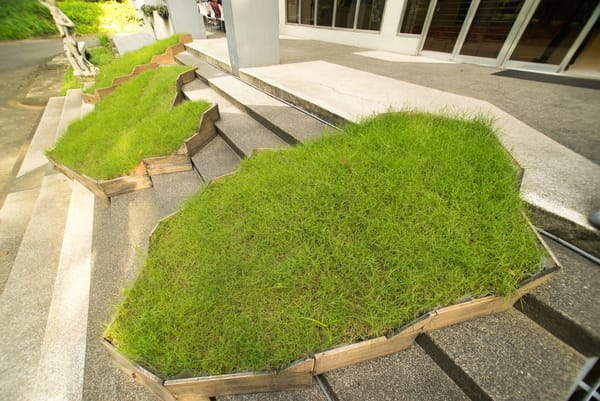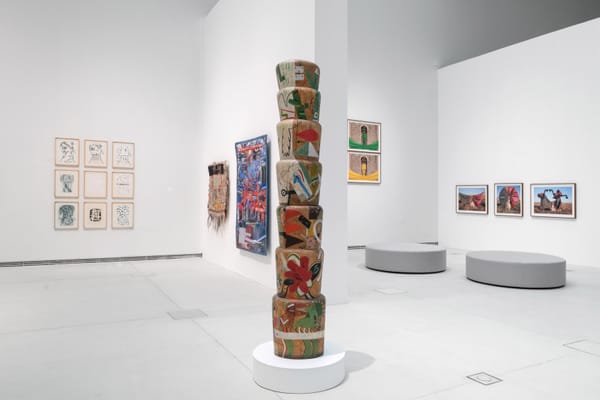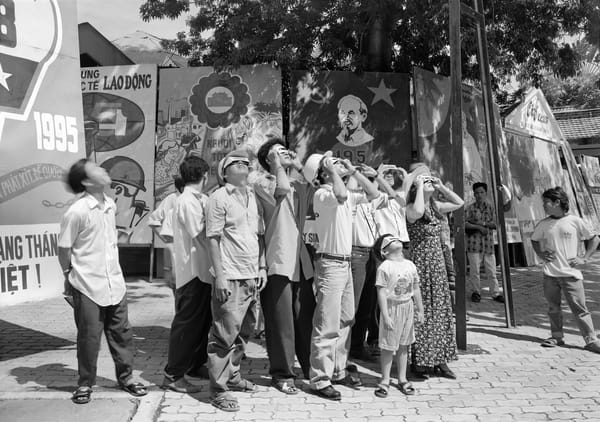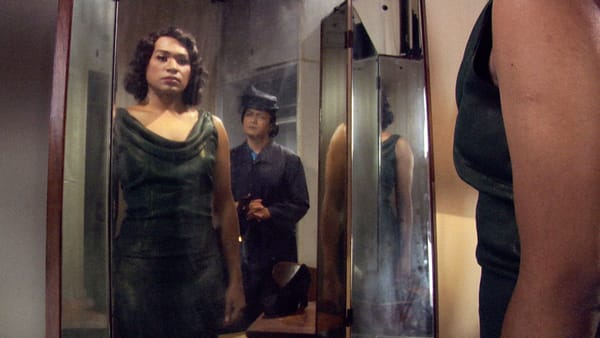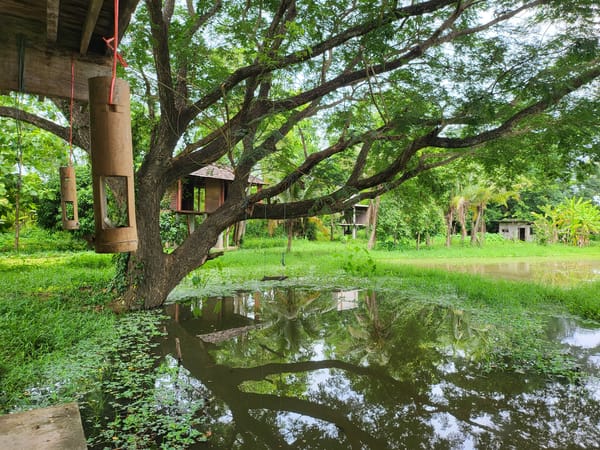Issue
Editor’s Letter
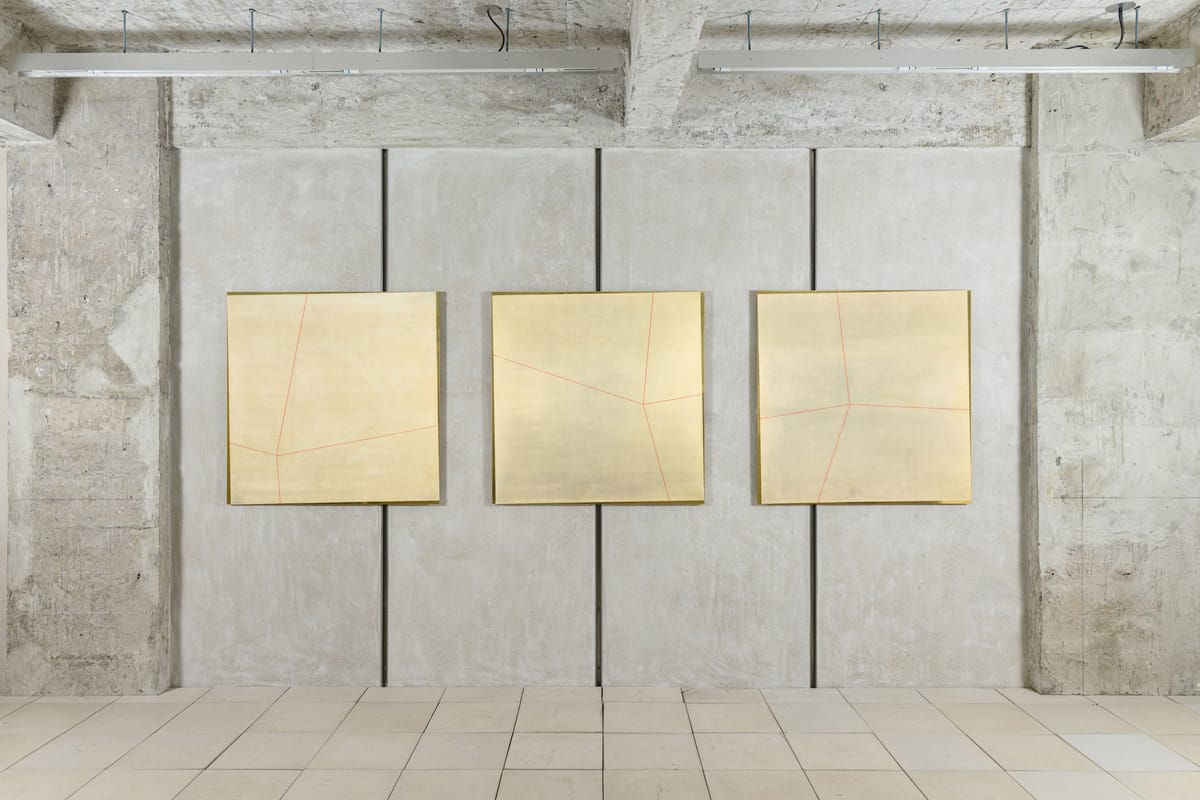
In our collective moment of anxiety-inducing political rhetoric and endlessly cascading bad news, this issue of ArtAsiaPacific spotlights artists’ work that seeks to reframe our sense of reality.
Our cover article features the work of Angela Goh, whose performance Total (2024) I was fortunate to experience at a symposium at the Leeum Museum of Art in Seoul last November. I was hypnotized by Goh’s unpredictable, quietly insistent actions that unfolded before a small audience. Like a vivid dream, her absurd gestures hover in my memory. AAP Sydney desk editor, Johanna Bear, explores Goh’s decade-long career of contorting her body like a puppet, pushing its limits. The artist explained to Bear that her choreography, as she experiences it, is an embodied meditation on life: “Thinking of what is not yet, not here, not quite, or not done is where the possibility to affect the world around you comes from. Of course the imagination can produce awful things, but it is also what produces joy, humor, and the unexpected.”
The work of Su-Mei Tse also shifts our perspectives. HG Masters sat down with Tse during her recent solo exhibition in Hong Kong and learned that the practice of the Luxembourg-born artist, who in 2003 won the Golden Lion at the Venice Biennale for best national pavilion, is informed by her background as a classically trained cellist. Masters explains how Tse magically weaves image, time, and memory into poetic narratives that pull you inside and then lets you wander in the spaces between sound and silence. He writes, “[Her works] function like a composition, mirroring the musical sense of arranging notes in time and space, across different registers in a score, to bring out resonances and harmonies of ideas.”
Elsewhere in features, Up Close spotlights Jane Jin Kaisen’s multilayered video installation Ieodo (Island Beyond the Sea) (2022–24); Shuang Li’s affecting Demolition Lovers (2024), an installation inspired by a Covid-induced separation between Li and her mother, presented at Prada Rong Zhai in Shanghai; and the acclaimed Raqs Media Collective’s new multimedia spectacle, which debuted in Hong Kong in March and considers our future in the context of AI.
For Inside Burger Collection, Alex Jen, assistant curator of prints and drawings and arts of Asia at the Art Institute of Chicago, reflects on the legacy of postwar American artist Anne Truitt, whose sculptures stand as hushed monumental ruminations on color and memory. Jen writes, “I am emboldened by Truitt’s journals, in which she reminded us that how we perceive art is clearly affected by how we perceive, indeed how we love and lament, life.” Her minimalist forms, unlike the cold abstractions of her peers, pulse with psychological depth and tactile intimacy, inviting viewers to linger in quiet reflection.
In Profiles, Chloe Chu considers the restlessly energetic Bruno Zhu, whose surprising installations, critiquing principles of spatial manipulation and display, tease out how narratives of identity are constructed. Hung Duong met up with Japanese-born, Bandung-based Kei Imazu on the eve of her solo exhibition at Museum MACAN in Jakarta. The two discuss her baroque artworks, which often combine analog and digital materials in order to mine the personal, historical, and mythological.
In Essays, AAP contributing editor Ryan Su considers creative ways for artists and galleries to prepare for forthcoming tariff wars. From Brisbane, curator and art historian Elizabeth Ann MacGregor reflects on the Creative Australia censorship fiasco and its potential consequences for art and creative expression. Jakarta-based artist Ella Witj pens a One on One, reflecting on her first encounter with Doris Salcedo’s work—at the Museum of Contemporary Art in Chicago when Witj was a young art student. Hung Duong files the Dispatch from Ho Chi Minh City, describing the can-do energy that fuels the city’s artists, art workers, and cultural spaces. In Reviews, we cover the ambitious curatorial efforts for the 16th edition of the Sharjah Biennale as well as major solo exhibitions from Seoul to Seattle. Lastly, for Where I Work, AAP Los Angeles desk editor Jennifer S. Li takes us to the studio of Greg Ito. His paintings, with their flat, dreamlike surfaces and layered symbolism, create immersive worlds that—like all the projects in this issue—unsettle viewers, inviting curiosity and contemplation.

